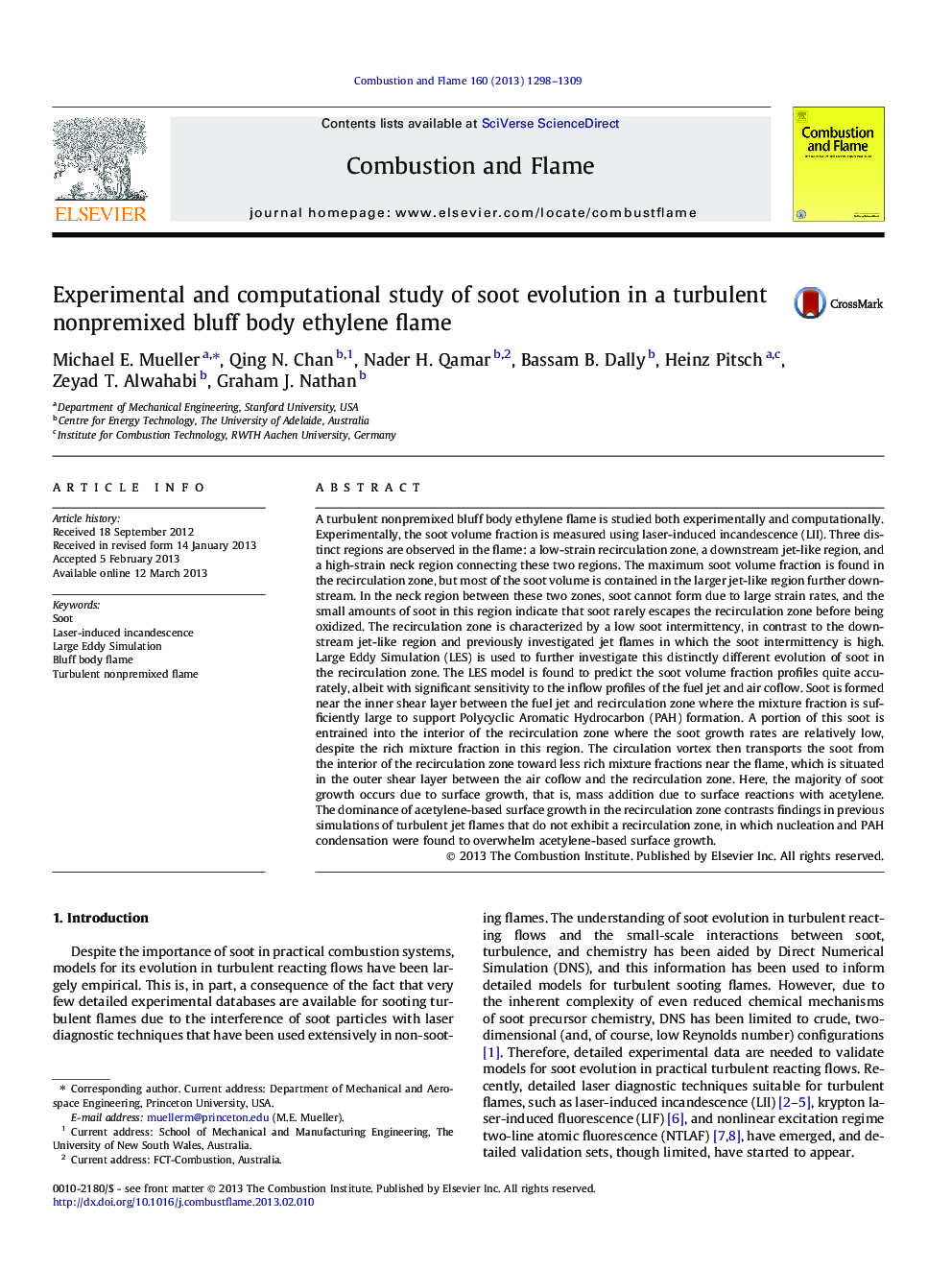| کد مقاله | کد نشریه | سال انتشار | مقاله انگلیسی | نسخه تمام متن |
|---|---|---|---|---|
| 169111 | 457977 | 2013 | 12 صفحه PDF | دانلود رایگان |

A turbulent nonpremixed bluff body ethylene flame is studied both experimentally and computationally. Experimentally, the soot volume fraction is measured using laser-induced incandescence (LII). Three distinct regions are observed in the flame: a low-strain recirculation zone, a downstream jet-like region, and a high-strain neck region connecting these two regions. The maximum soot volume fraction is found in the recirculation zone, but most of the soot volume is contained in the larger jet-like region further downstream. In the neck region between these two zones, soot cannot form due to large strain rates, and the small amounts of soot in this region indicate that soot rarely escapes the recirculation zone before being oxidized. The recirculation zone is characterized by a low soot intermittency, in contrast to the downstream jet-like region and previously investigated jet flames in which the soot intermittency is high. Large Eddy Simulation (LES) is used to further investigate this distinctly different evolution of soot in the recirculation zone. The LES model is found to predict the soot volume fraction profiles quite accurately, albeit with significant sensitivity to the inflow profiles of the fuel jet and air coflow. Soot is formed near the inner shear layer between the fuel jet and recirculation zone where the mixture fraction is sufficiently large to support Polycyclic Aromatic Hydrocarbon (PAH) formation. A portion of this soot is entrained into the interior of the recirculation zone where the soot growth rates are relatively low, despite the rich mixture fraction in this region. The circulation vortex then transports the soot from the interior of the recirculation zone toward less rich mixture fractions near the flame, which is situated in the outer shear layer between the air coflow and the recirculation zone. Here, the majority of soot growth occurs due to surface growth, that is, mass addition due to surface reactions with acetylene. The dominance of acetylene-based surface growth in the recirculation zone contrasts findings in previous simulations of turbulent jet flames that do not exhibit a recirculation zone, in which nucleation and PAH condensation were found to overwhelm acetylene-based surface growth.
Journal: Combustion and Flame - Volume 160, Issue 7, July 2013, Pages 1298–1309